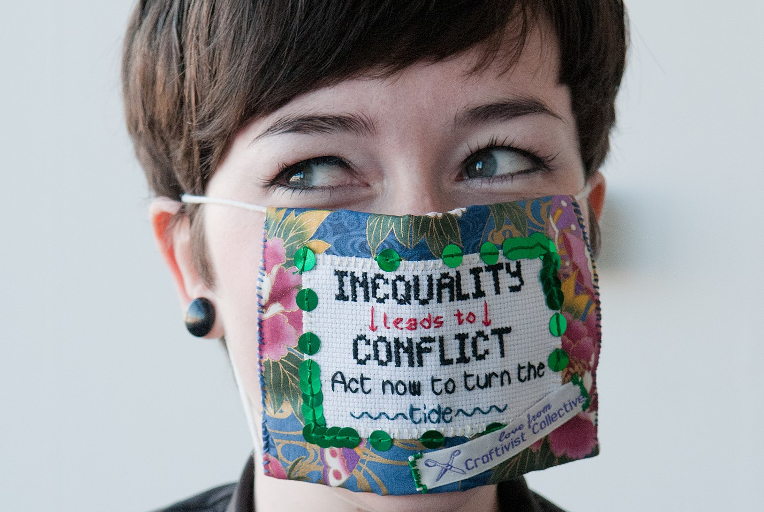Last October, I curated an art exhibition featuring work from the Global Gender and Cultures of Equality (GlobalGRACE) project, a four-year research project based in Bangladesh, Brazil, Mexico, the Philippines, South Africa and the UK. In each location, academics, artists and local communities are combining intersectional feminism with artsbased practices to ‘help build and sustain more just and equitable societies’. These activities are rooted in our shared belief that creative expression has the power to shape how people think and act in the world.
Experience justifies our faith. In Cape Town, a theatre company run by and for sex workers is transforming attitudes towards decriminalisation. In Chiapas, a pop-up museum is sharing political education between indigenous and immigrant communities. In Sylhet, photography by women construction workers is galvanising organising around labour rights. Performance, poetry, song, sculpture, animation, music, dance, film… all can and have provided backdrops and backbones to positive, even revolutionary, social change – as GlobalGRACE has found and as Red Pepper articles frequently underscore.
At the exhibition, we used red cord to figuratively and materially link works from six disparate sites. These ‘connecting threads’ emphasised our collaborative spirit and gestured towards the ways transnational solidarity and exchange forges bonds between people and struggles. They also served a wider symbolic purpose, tying our work to longer histories of social justice movements in which textiles have played a vital role.
As Rozsika Parker documented in her 1984 book The Subversive Stitch, (primarily but not only) women have been using embroidery and textile arts to express subversive and politically potent ideas since at least the middle ages. Dismissed as ‘women’s work’ – certainly not artwork, and undervalued as ‘domestic’ labour – sewing became a key skill for suffragettes, whose sashes and ribbons effectively branded a movement. The handiwork and designs of countless, often unsung, union banner-makers likewise forged a recognisable style that endures in marches, galas and museums today.
In the 1970s, Chilean women spread word of Pinochet-era repression and resistance through embroidered arpilleras. From the 1980s onwards, the devastation wrought by AIDS – exacerbated by government inaction – has been documented worldwide through collaborative memorial quilts. ‘Yarnbombing’, in which urban fixtures are wrapped in wool, has boomed since the 1990s. Indonesian artist Fitriani Dalay, for example, deploys it to reclaim public space from the ‘visual pollution’ of advertising. Knitting was also a staple activity at Greenham Common antinuclear camp, used to stitch slogans and ease minds. During the 2014 Trident renewal protests a seven-mile scarf – eight months in the making – streaked the road between the atomic weapons establishments at Aldermaston and Burghfield.
Textile arts and ‘craftivism’ both remain too-easily dismissed, however, even while material culture continues to shape the world. The Silk Road structured pre-industrial trade; ‘King Cotton’ drove empires built on slavery and dispossession; ‘fast fashion’ currently exploits millions and imperils the planet. Yet radicalism has grown alongside. Protesting textile workers of 1800s Paris share ideological threads with garment industry strikers from India to Lesotho today. Like them, in the face of injustice, we should recognise the value of crafting resistance and sewing dissent.
Teaser photo credit: By Mark Loudon – https://www.flickr.com/photos/42839495@N07/6270611696, CC BY 2.0, https://commons.wikimedia.org/w/index.php?curid=107212112





